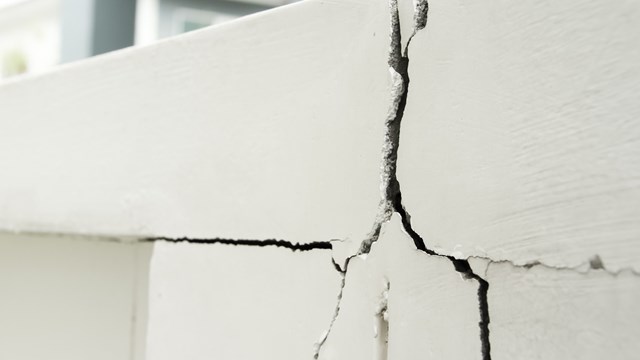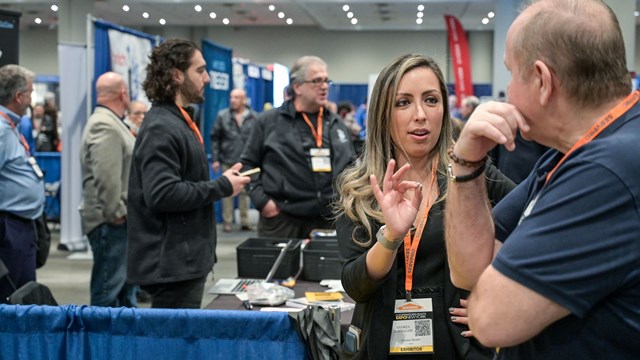
Unless it's a thoughtful gift or a party in their honor, nobody likes surprises. That's especially true when it comes to sudden, serious, or non-negotiable repairs to a condo building or HOA. A community must have enough money saved to deal with major projects as they arise, or risk major financial and structural troubles. But economic woes of residents such as unemployment or default, or living on tight fixed incomes, means more HOAs are finding it difficult to keep their reserves adequately funded.
The solution often is to mandate special assessments for necessary capital projects. Special assessments can tie up community administrators and residents because financial problems often mean putting off capital improvements with the building or its common areas, which leads to slumping housing values. And decreasing housing values can cause more financial problems for communities since property value losses make it harder to sell properties, which can lead to more homeowner defaults.
A recent Community Associations Institute (CAI) study found that cash-strapped associations are trying everything to make do. To compensate for a cash shortfall, the CAI study shows 38 percent have postponed planned capital improvement projects, 35 percent have reduced landscaping services, 31 percent have reduced contributions to their reserve accounts—funds that are set aside for major maintenance and repairs, 23 percent have borrowed from the association’s reserve account, 16 percent have levied special assessments, 12 percent are allowing residents to perform minor tasks in the community and 6 percent have borrowed from banks and other lenders.
That’s why it is essential for a community to have adequate funds in reserve, especially in tougher economic times. While building up cash reserves can be difficult, there are ways that communities can build their reserves without causing undue distress to struggling residents. Knowing how to achieve such a bankroll can save money in the present and future.
Checking Your Balance
To have the right amount of capital reserves for a community, buildings and HOAs use one of two particular formulas to determine their financial needs. The two methods commonly used to calculate this necessary expenditure are the Component Method and the Cash Flow Method. With the component method, a building’s management calculates the replacement cost of each building component and divides it by the useful life of each component, such as the building’s HVAC system or roof, etc. The useful life of the component can be determined by its age and condition, and also by the maintenance work done on it. Technology can affect the useful life of a component, because technology can make some building systems obsolete. Environmental conditions also can affect useful life, too, since some environments are harder on building components.
Replacement costs of building systems also can be affected by the marketplace. Depending upon a community’s ability to hire union or non-union workers, and the competition in the market between contractors (or lack thereof), rising costs of materials, a building project could be more costly.
Using the cash flow method, a building’s consultant tallies the community’s yearly expenses to determine replacement costs of components. By calculating cash flow needed for all components over 20 years or more into the future, experts determine how much on-hand cash the community will need for regular replacement and maintenance of building systems. Calculating twenty years ahead isn’t far enough in advance, some experts say.
“We always recommend 30 years,” says Matthew C. Kuisle, client services director of Reserve Advisors in Tampa. “But we also consider 40-year items, like elevators.”
When the economy is tough, some communities do avoid spending residents’ money on building up capital reserves but such inaction can be foolish and even border on being criminal. Florida’s condo statute requires associations to have capital reserves to pay for any expenditure exceeding $10,000. On the plus side, associations that keep their properties in top shape are wisely maintaining the value of the properties, which is more important than ever when the economy is slow.
“Resale value in this tough marketplace is a big concern. You could lose the right buyers if your property is not adequately maintained,” Kuisle says, adding that efficiency also is a factor when foregoing maintenance. “Projects don’t get done in a timely fashion, resulting in added costs for things that weren’t done.”
Waiving capital reserve fees often needs to be done by an action of the association board, but it is inadvisable because the results of such a move could be disastrous. If a person is injured from concrete dropping from a neglected porch, or a resident falls and breaks his hip while walking on cracked paving in the parking lot, the association can be sued. Regularly maintaining all aspects of a multifamily community is a matter of protecting every resident.
“We’ve had associations where their elevators went out and residents couldn’t [easily] get to their apartments because the association was in bad financial shape,” says Ken Arnold, CEO of Association Financial Services in Miami. “Emergency fixes are going to be more expensive. These things need to be maintained.”
How much a community should set aside to pay for short-term and long-term maintenance and improvements depends partly upon the age of the community and the wear and tear on its building systems. But that doesn’t mean the average property manager is qualified to determine this required amount of funding. Scrutinizing complicated building systems like elevators requires trained eyes. Such experts can help an association decide how much it needs in capital reserves by doing a reserve study.
Budgeting for Safety
A reserve study is a planning tool that calculates how much the community will need to set aside to properly maintain its common elements and building operating systems. Associations should have a reserve study done every three to five years to evaluate the components and common elements of the community. The cost of a reserve study depends upon the size of the community, but for some, it might cost $10,000 and take two to three months. Annual reviews of a community are recommended by some professionals and can cost as little as $500 and take a few weeks but they don’t obviate the need for a full-fledged reserve study.
Reserve studies should be done by qualified professionals, such as Reserve Specialists, which is a CAI-developed designation for such professionals. The Association of Professional Reserve Analysts also has a designation for such experts, which it calls Professional Reserve Analysts. While some construction industry experts, engineers or architects can do reserve studies, having a Reserve Specialist or Professional Reserve Analyst do the study provides a building with a bit more protection. Because such specialists are accredited, they have an ethical responsibility to ensure the study is done right.
If a building or HOA doesn’t have enough money in reserve and something comes up, such as a lawsuit or major repair, the community has few options, and all of them are expensive. The board can pass an emergency special assessment and put the new financial burden on the homeowners, which is never popular, especially in a slow economy. This could result in some residents getting in arrears with their maintenance fees and ultimately, some might default on their mortgages. The association might be able to get a bank loan to cover the unexpected expense but that might take a couple months to come through. Or, the association might get a private loan, which might be received in a week or so but could be more expensive.
Sometimes, vendors offer financing to help communities pay for repairs. Other times, the association might opt for a “patch” approach, fixing the problem in the short term to keep things going long enough to build more reserves, in order to completely remedy the problem in the future.
“There are a lot of associations that don’t have adequate reserves. As time goes on you’ll see things break and have to be replaced. Often, the only way to do it is a special assessment,” Arnold says. “A lot of people are very sensitive to every dollar. But your job as a board member is to maintain the building. Do the best you can to keep costs reasonable.”
Once the reserve study is complete, board members and managers should make practical use of the information. The easiest way to use it is to review the information in the study when the board is creating its annual budget. The board should use the plan to structure the community’s investments. Generally speaking, 10 percent of the operating budget each year should go into reserves, says John R. Frazer, vice president of J.R. Frazer Reserves & Insurance Valuations in Boca Raton. The Federal Housing Administration (FHA) also issued new guidelines for multifamily communities requiring that at least 10 percent of a condo association’s yearly budget be set aside for reserves.
Ideally, the building’s financial plan should extend for at least 20 years into the future, because during that time, most major building systems will be at or near the end of their useful life. Elevators and some windows have a longer life than two decades, but since these items are costly to replace, they also should be included in the community’s financial plan. Because some assets of the community will last 30 years or more, the financial plan should be updated at least annually, Arnold says.
Aside from the financial benefits of such planning, other benefits of having a reserve study include an immediate plus for residents who are buying into the community. Many people who are buying condos have lenders who are scrutinizing the association’s financial health. Lenders want to see that the community has adequate reserves before approving a loan for a would-be homeowner. Poor financial planning by an association could make it difficult for new homeowners to buy into the community and conversely, for existing homeowners to sell their properties.
If a building has inadequate reserves and needs to raise cash for a repair or another emergency in a hurry, the board should explain to unit owners exactly how much funding is needed, Frazer says.
“The board needs to decide to fund the reserves at 100 percent of the annual requirement, or not. But they should at least collect part of that,” Frazer says. “Put it to the vote of the owners. You need to make some contribution annually.”
Jonathan Barnes is a freelance writer and a regular contributor to The South Florida Cooperator.






Leave a Comment